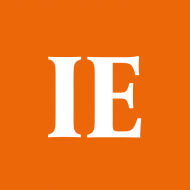The number of independent schools in the UK has returned to its pre-2008 recession level, the 2016 Independent Schools Council (ISC) Census reveals.
Completed by all schools in ISC membership for 42 years, the ISC Census provides a picture of where independent schools sit within the UK’s education landscape and is regarded by government, policymakers and opinion formers as the authoritative source of such data.
There are now 1,280 ISC independent schools compared to 1,271 in 2008. The 2016 figure represents the highest total this century and the 518,432 pupils represent the most since records began in 1974.
Fees and finance
Fee increases remain stable at 3.5%, the lowest since 1994. A third of pupils receive fee assistance worth in total more than £850m.
Classroom demographics
The movement from single-sex to co-ed also remains stable, with a ‘virtually unchanged’ number of girls’ and boys’ schools. Over a third of schools have boarders, and the number of international students remains at 5.3%. Thirty percent of students are from a minority ethnic background.
There remains a strong focus on academic education routes, with 92% of students going on to university (56% to Russell Group universities). Awareness and popularity of vocational education is growing, with the rise of University Technical Colleges proving a strong, employability-focused route, so we could see this figure change over the coming years.
When it comes to teachers, the number in independent schools has risen slightly to 57,000 – with 39% men. The pupil-teacher ratio is under 9:1 – one of the most obvious benefits of independent schools for parents.
Julie Robinson, General Secretary of ISC, said: ‘Having felt the pressures of worldwide recession in 2008, independent schools have adapted where necessary and are thriving just eight years on. It’s both heartening and reassuring to see the numbers of schools at such healthy levels, providing choice and excellence to pupils and their parents.
‘Beyond these headline figures, the numbers recorded in this year’s census are very stable and contradict claims by some that private education is in some sort of peril. In many areas the stability of these figures shows just how remarkable our schools really are.’
Andrew Hampton, Headteacher of Thorpe Hall School in Southend, Essex, said: ‘Locally it is clear that the storm of the worst recession in living memory has passed and the climate for parents to invest in high quality education for their children has returned. Like many schools across the country we have continued to invest in our teachers and facilities by using our reserves and this strategy has proved successful in attracting students and keeping fees competitive. We are poised once more to grow over the next decade in terms of the quality of our educational offer, and that is very pleasing.’
David Goodhew, Head ofco-educational London day school Latymer Upper School, said: ‘The sector is responding to the challenge of affordability with a significant increase in the level of fee assistance and means-tested bursaries. Contrary to popular mythology, fee increases have been driven mainly by staff costs rather than a ‘facilities arms race’, but independent schools are using their own funds to widen access and remain open to poor families and those in the ‘squeezed middle’. Why do we do this? We believe young people should be able to benefit from the education we offer, whatever their background; we do not wish to become ‘exclusive islands of privilege’. At Latymer Upper, 115 pupils are supported by bursaries, including 75 free places. Our aim is to double this support by 2024, so we will be able to be ‘needs blind’ for 25% of our pupils.’
- For the first time, the Census also looks at independent exam results and ‘value added’:
- Half of all A-levels graded A*/A (compared to a quarter nationally)
- Two thirds of GCSEs graded A*/A (compared to one fifth nationally)
- Entries (and grades) for STEM and MFL subjects disproportionately high
- Independent schooling can result in average GCSE grades being 0.64 higher each*
- Independent education equivalent to two extra years’ schooling by 16*
*Research by Centre for Evaluation and Monitoring, Durham University, 2016
Barnaby Lenon, Chairman of ISC, said: ‘Exam results in ISC schools have always been very high and remain so. The achievements of our pupils absolutely show the benefits of independence from curriculum constraints and outstanding classroom teaching. Independent schools have always believed that their broad all-round education, commitment to academic excellence and first-class university guidance provide tremendous benefits. Fee-paying parents have the right to expect value for money and it is important that we can demonstrate this.’
Read the full Census at www.isc.co.uk/research/annual-census










